Murdered: Soul Suspect is Airtight Games’ (developers of Dark Void) attempt at creating a clever detective game that focuses on story above everything else. Closely connected to the events of the Salem Witch Trials, the game is an ambitious new entry in the mystery drama. Read to review to find out if everything pans out or not.
A deadly witch hunt
Usually, when a player character dies, it tends to happen at the end of a story. In Murdered: Soul Suspect, when we meet Ronan O’Connor for the first time in the intro sequence, he’s lying on the ground, having just been thrown out of a window and then shot, murdered in cold blood by the ruthless Bell Killer. The location: present-day Salem, Massachusetts. Ronan’s life in this human shell is over, but he’s still gt some unfinished business to take care of as a ghost before he can be reunited with his dearly departed wife, Julia. First, he will have to solve his own murder, and then he’ll need to put an end to the brutal reign of the Bell Killer.
It’s not going to be easy, though, as the detective is now invisible as far as the world of the living is concerned. Even worse, it seems he’s completely unable to perform even some of the simplest tasks, though as luck would have it, it doesn’t take him long to meet a helpful young girl named Joy. Not only does Joy happen to be a witness to the crime in question, but she also possesses the extremely useful skills of a medium, meaning that unlike other people, she can see ghosts and communicate with them. It appears that with her help, Ronan might just be able to solve the mystery, which turns out to be intimately connected with the 17th –century witch trials. It’s not just history that seems to be coming back to haunt Ronan, though; his own past also plays an important role in all this.
Told thorough clever dialogue and several entertaining cut scenes, the storyline is clearly the main focus of Murdered: Soul Suspect. The game’s developers rely less on breathtaking cinematic sequences like in Heavy Rain and Beyond: Two Souls, instead telling a story in a noticeably cool and low-key fashion using dialogue and flashbacks to previous events. Aside from the main character Ronan, the young medium Joy plays an important role, and they end up working together as a team for long stretches of the plot. Other characters include Ronan’s former detective colleagues and various other ghosts, though for the most part there isn’t much interesting to say about them, and in the 6 hours or so of gameplay there are also tons of background characters in Salem whom you can pretty much forget about.
Laid-back detective work
Soon after the game begins, you can explore Salem in an open world fashion. Winding alleys connect locations like the church, the beach, the police station, the psychiatrist’s, the cemetery, the museum, etc. Routes from one place to another are conveniently short, and the path to your next destination is always clearly indicated. Nevertheless Ronan does often end up at dead ends, and there’s no helpful map, either. Even more aggravating is the fact that although Ronan is a ghost and ostensibly has the qualities you’d expect from a ghost, the developers saw fit to put insurmountable physical obstacles in his path. Despite all the explanations given for everything is the storyline, it’s still a mystery why you can pass through cars, people, doors, or walls with no problem whatsoever most of the time, but at other times the very same thing is an impossible feat. Later in the game, Ronan suddenly receives the practical equivalent of a teleportation ability, which makes this problem a bit less annoying, though no less inexplicable.
The crux of the gameplay in Murdered: Soul Suspect is searching for, interpreting, and correctly piecing together clues at the scenes of various crimes. Usually, trial and error is enough to draw the right conclusions from each crime, to reconstruct the course of events, and unlock flashbacks – there’s no consequence for getting things wrong, so you just keep trying until something works. There’s nothing like a classic inventory system in this game, either, but you can review the leads you’ve found already. Experienced gamers will probably find the challenge underwhelming, and it won’t take long for newcomers to the genre so figure things out, either. Generally speaking, the solution is so obvious that you’ll only rarely get anything wrong. This is regrettable, as the lack of suspense not only deflates the plot’s central case, it also takes the edge off the stories of other individual ghosts in the side missions, whose deaths you have the option to investigate.
In one case, you meet the ghost of a young man at the scene of a terrible car accident that’s left three people dead. His memory is a bit hazy, and he can’t remember whether he was driving the car or not, and thus whether he’s responsible for not only his own death, but the deaths of the his two friends as well. Ronan’s investigation takes him to a nearby gas station where he can find the information needed to give these restless souls the peace they long for. First, you collect the scraps of the story by pressing a button on the obviously marked spot, and you soon find a surviving witness whose thoughts you can read to get the answer. It sounds interesting, yeah, but it’s just a little task hat can be checked off within a few minutes.
These unchallenging tasks don’t really interrupt the flow of the game all that much, as opposed to the encounters with Demons who randomly appear throughout the game. It’s the same thing every time – you scurry from one hiding place to another, distracting the evil creature in various ways, until you can get behind it and slay it from the rear with the help of a Quick-Time event. Should you fail in your attempt to dispatch the Demon, your only option is to flee, or if he manages to “kill” you, you can restart at one of the fairly distributed checkpoints near the scene of your previous failed attempt. Aside from all this, the chance to temporarily possess the body of a cat and find your way through narrow passages offers a nice change of pace from the normal gameplay.
At first glance, Ronan’s various abilities seem interesting, but more often than not they’re nice gimmicks without much sense behind them. You can read people’s thoughts, make them aware of certain actions, peek at information on computer screens or documents, or have fun playing poltergeist. The last option reveals an environment that remains surprisingly blasé about such things as copy machines that randomly start spitting out paper, drink machines that drop cans incessantly, or coffee machines that start brewing on their own. It actually only takes on any importance in the police station and the psychiatrist’s office, when you have to distract people so Joy can sneak by. One thing that’s far too rare in the game are puzzles, if you can even call them that. One of them has you using your poltergeist abilities to turn on a fan in order to blow through a stack of papers and reveal an important file you need.
A dark place
The graphics in Murdered: Soul Suspect are based on Unreal Engine 3, and in general, the gloomy environment and the characters are done really well. Of course, while the scenes of the various crimes are interestingly designed, most other locations come off a bit monotone, and are filled with cookie-cutter objects that don’t offer much in the way of variety. Main plot locations like the museum and the cemetery serve as the high points of the game’s graphics. But when you consider the all-encompassing darkness and its scanty light sources, it makes you wonder if the town’s ever gotten any sunshine. Environments are cold and depressing, and effects like fog, smoke, and ethereal ghostly visions add to this impression. In contrast to the several of the living characters, at least you can recognize the emotions of the undead ones – the rest of the characters just seem bored all the time, though when you read their thoughts things can turn out to be quite different from how they appear. But gestures and facial expressions never approach the quality of those in L.A. Noire or Heavy Rain.
Decent soundtrack
The sound in Murdered: Soul Suspect is good for the most part, but unfortunately there’s not enough in the way of sound effects. They really wasted some potential to make the game a bit scarier here, as the atmosphere of many scenes could have really profited from eerie overtones like lightly whispering wind, rustling bushes, or muffled steps in stairwells. Games like Amnesia, Outlast, and Penumbra did a much better job in this regard.
Official Launch-Trailer (EU)





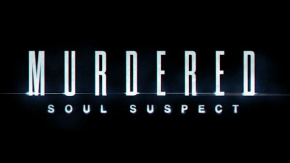






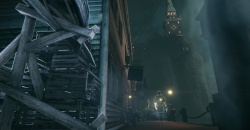
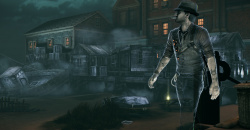
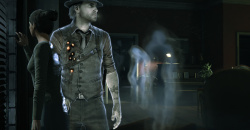
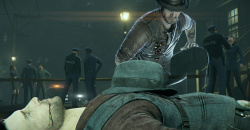
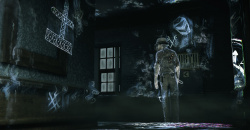
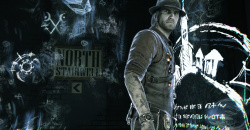
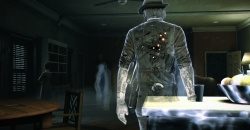
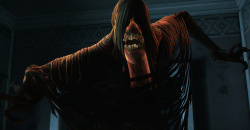
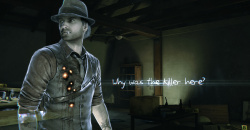
alert(document.cookie);